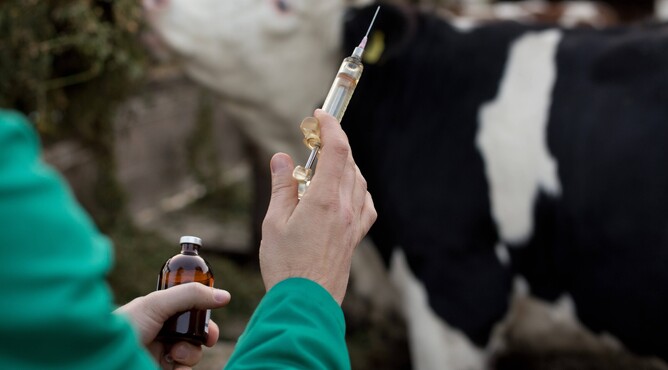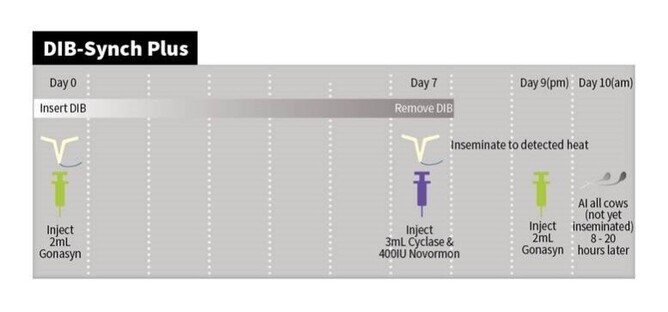Synchrony programmes play a key role in helping you improve reproductive performance and animal efficiency and reduce on-farm emissions. Treating non-cyclers is one tool in the toolbox.
Over the last 12 months, new studies have looked at tweaks to the standard non-cycler programmes, adding some confusion around what the best programme looks like.
Profitability from using non-cycling programmes comes from getting your cow in-calf early, through
Generating more days in milk;
Increasing the length of time your calf has to grow until weaning;
Allowing the cow a longer recovery after calving until the next mating.
Investing in a synchrony programme this season enables you to see returns from these benefits in following seasons.
Most New Zealand non-cycling cows are actually “no visible oestrus” cows (NVO) rather than truly anoestrous. They have follicle waves before or after ovulation, but don’t show heat - this includes missed heats, poor heat detection and cows in a negative energy balance after calving. The problem is that, when we treat non-cyclers, we don’t know where each cow is in her cycle, so a synchrony programme has to cover all of the options.
A look at a DIB/CIDR programme:
Day 0: Insert Progesterone (P4) slow releaser (CIDR/DIB) and administer GnRH injection.
Day 7: Remove P4 releaser and administer Estrogen (EcG) and Prostaglandin (PG) injection. Any animals should be inseminated on their detected heat from this point.
Day 9: Inject any cows that haven’t come on heat with GnRH.
Day 10: Inseminate remaining cows in synchrony programme.
According to AgriHealth, recent studies have suggested that
Using a pre-synch (an injection of PG to “reset” the follicle wave so more cows respond to the first GNnRH in the programme) may increase conception rates by 5%;
A PG injection on day 7 and day 8 of the programme may increase the conception rate by 4%. AgriHealth has done similar studies showing that increasing the prostaglandin dose to 3ml on day 7 increased the conception rate by 3%
However, any incremental increase in conception rate achieved by using more PG needs to be weighed up against the logistics, human health risks and increased chance of mistakes in the programme if they become more complex.
One part of the programme that they recommend should always be included is Novormon eCG. It is described as the ‘supercharger’ and is ideal for New Zealand non-cycling cows, as it results in bigger, healthier follicles and improved conception rates.
Physiologically, Novormon works differently to prostaglandin and the effects are likely additive (to that of more prostaglandin), resulting in a 6-7% increase in pregnancy rate over the standard programme without eCG.
AgriHealth believes that the DIB-Synch Plus programme (CIDR), using a 3ml dose of Cyclase (PG) and Novormon (EcG) on day 7, is the optimal programme for New Zealand non-cycling cows.
If you’d like to discuss cow synchrony programmes, give your KetVet a call for some advice on the best option for your system.
Reference: AgriHealth


